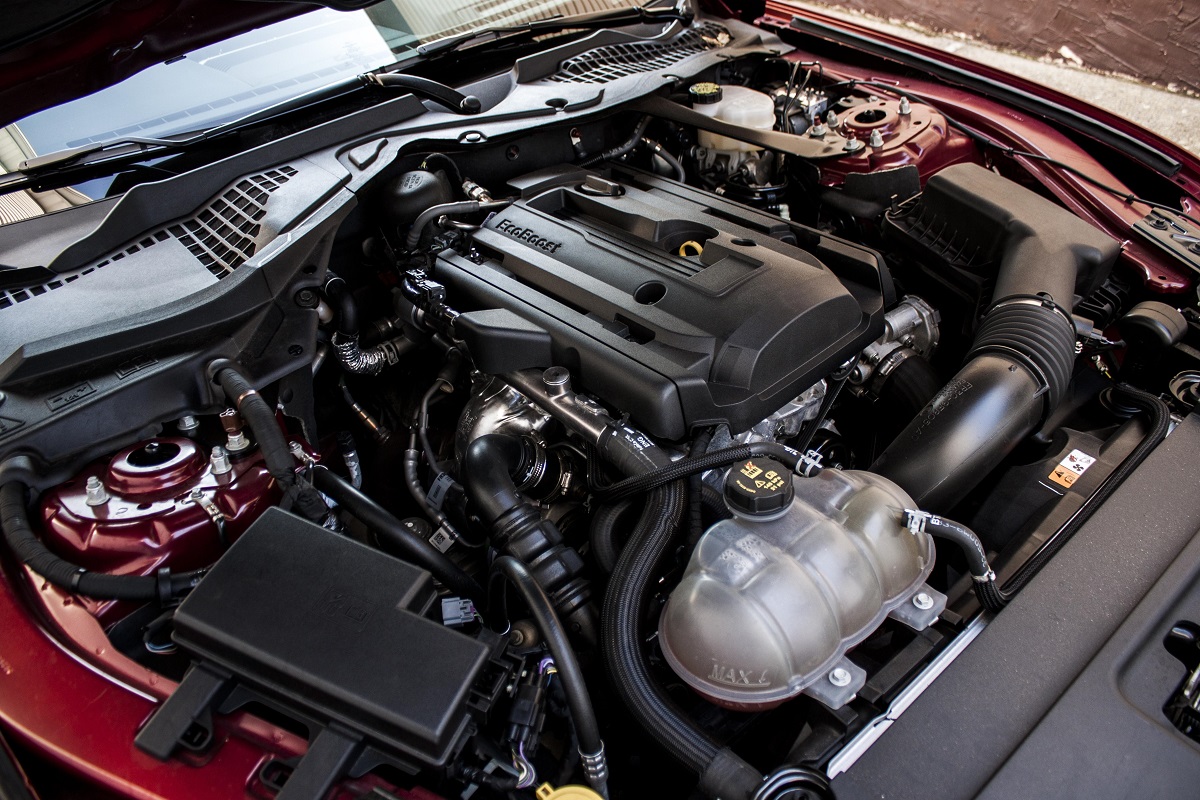Currently Empty: $0.00

It seems counterintuitive, but the engines on modern cars are getting smaller and smaller, while making more and more power, and the “secret” is turbochargers. European sports cars like the Audi S4 & S5, BMW M3, Maserati Quattroporte and countless others have replaced their sonorous naturally-aspirated V8’s with smaller turbocharged V6’s, but it may surprise you that the humble Ford F-150 did it first.
The first factory-turbocharged cars were 1960’s oddities like the Chevy Corvair and Oldsmobile Jetfire, but the technology became more commonplace on sports cars from the 1980s, usually accompanied with exciting TURBO graphics and a healthy serving of lag. Early turbocharged engines had to use a relatively low compression ratio to be prepared for the pressurized intake air; otherwise, pressure inside the cylinders could get too high and start making stuff blow up. This meant that they were VERY slow at low RPM and couldn’t make much power until higher RPMs, when the turbo was spinning enough to create boost, but that’s not very practical if you’re just driving to the grocery store and don’t necessarily want to stay on the throttle until 6000 RPM.
In the 1990s, the Mk4 Toyota Supra and FD Mazda RX-7 used sequential turbochargers to combat turbo lag. These vehicles had two turbochargers; one small one that spooled quickly to reduce lag, and a second much larger one to make a lot more boost at higher RPM and get the headline-grabbing power numbers. Some diesel trucks use compound turbocharging, which is similar to sequentials, except the smaller turbo feeds directly into the larger one to get that one spooled up even faster. But the technology that pretty much killed the concept of turbo lag was direct fuel injection.
Most cars made between the 1980s and about 2010ish use port fuel injection, where the fuel mixes with air in the intake manifold, and that mixture flows into the cylinders. Cars with gasoline direct injection (GDI) instead inject fuel directly into the cylinders of the engine. Spraying fuel directly in there lowers temperatures inside the cylinder, which means the compression ratio can be raised, making the engine more powerful and efficient, even before the turbo boost kicks in. Turbos can now be smaller and more responsive at the lower RPMs that most cars operate at in casual driving. You no longer need to rev your car up to 5000 RPM or more to get boost; you can get some boost from the turbo at normal engine speeds when you’re accelerating from a red light or trying to make a pass, while still having enough power at low RPM to stay out of boost range entirely and get great fuel economy at regular cruising speeds.
The combination of GDI and turbocharging became popular in the mid 2000’s on attainable performance cars like the MazdaSpeed 3 & 6, Volkswagen GTI and BMW’s -35i cars, but Ford’s EcoBoost line of engines were the first time this technology was seen in a non-enthusiast application. The 2013 Fusion debuted with a range of turbocharged 4-cylinder engines while the competing Honda Accord and Toyota Camry still used a simple V6, but most controversial was putting the EcoBoost 3.5L twin-turbo V6 into the F-150 at a time when full-size truck buyers still had a lot of luddite tendencies. They hedged their bets by continuing to offer a V8, but the EcoBoost V6 made more power and got better EPA fuel economy numbers.
About a decade after the first EcoBoost vehicles were released, smaller turbocharged engines are the norm today. The F-150 can now be had with an even smaller 2.7L V6, and its perennial competitor, the Chevy Silverado, offers a 2.7L four-cylinder that makes comparable power. GM, Honda and pretty much every European brand have mostly turbocharged their entire lineups. Even Ferrari and McLaren have released new supercars that use a twin-turbo V6 instead of the V8 they used to have. But because these are normal cars doing normal things, they are seeing more use and mileage than older turbocharged cars, and just like an alternator or AC compressor or steering rack, turbos can wear out at high miles too. As part of our mission to make it easy to buy auto parts, we have put together this guide on how to find the correct replacement Ford or Lincoln EcoBoost turbocharger. Please find your engine and vehicle application on the list below, and follow the link to a guaranteed exact fit replacement turbo!
